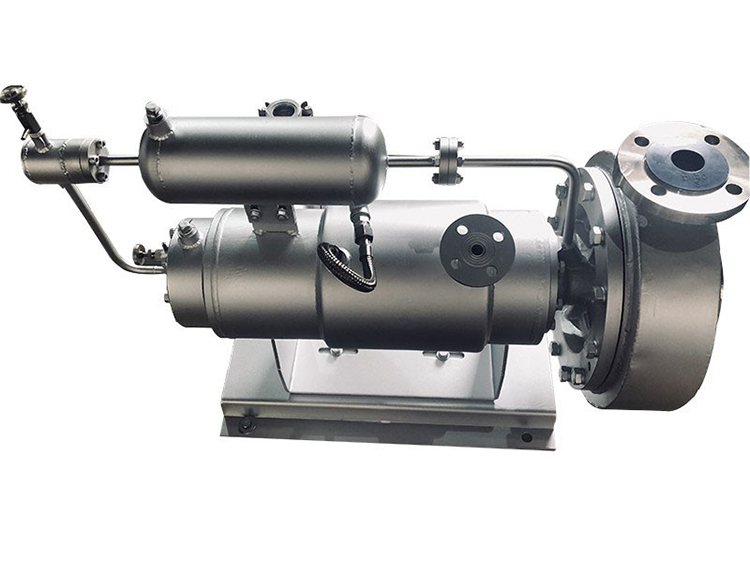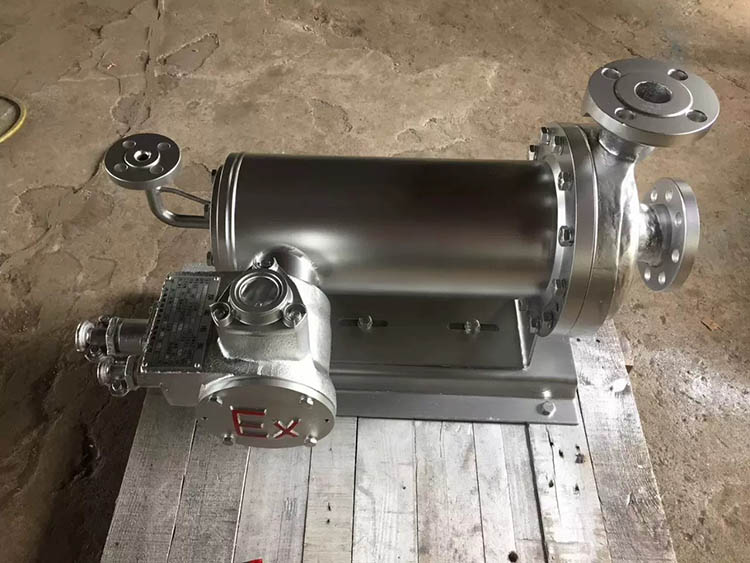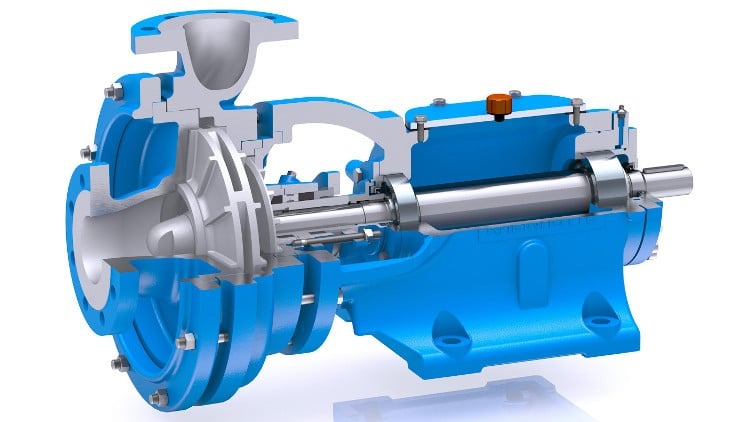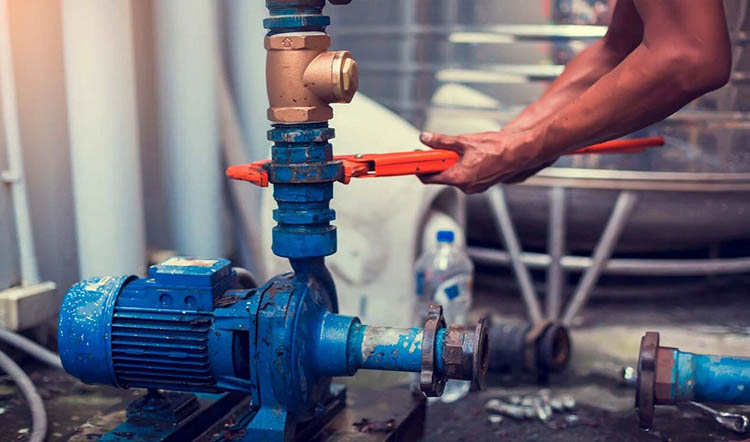Axial Displacement in Shielded Pumps: Impact and Control Methods
Shielded pumps are widely used across various industries, especially in applications where fluid leakage must be strictly controlled, such as in chemical, pharmaceutical, and photovoltaic sectors. The stability, sealing performance, and efficiency of the pump directly impact the safety and reliability of the production process. Among the key factors affecting pump performance, axial displacement is one of the most crucial. This article will provide a detailed discussion of axial displacement in shielded pumps, its influencing factors, and how to effectively control this issue.
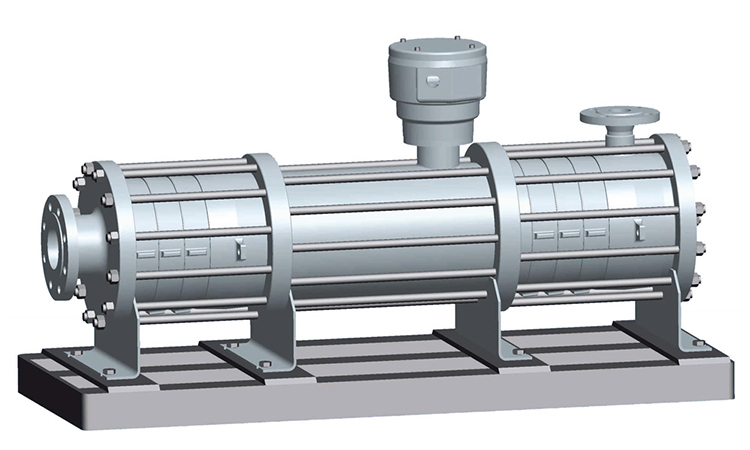
What is Axial Displacement in Shielded Pumps?
Axial displacement refers to the movement of the pump shaft along the axial direction during operation. In shielded pumps, excessive axial displacement can lead to bearing wear, seal failure, increased vibration, and even pump failure. Therefore, maintaining an appropriate level of axial displacement is essential for ensuring stable and efficient pump operation.
Standard Axial Displacement in Shielded Pumps
Typically, the axial displacement in shielded pumps should be controlled within the range of 0.1 to 0.3 mm. Displacement within this range ensures that the pump bearings, seals, and other critical components operate under normal conditions without excessive wear or leakage. However, the exact value can vary depending on the pump design, operating conditions, and fluid characteristics.
Factors Affecting Axial Displacement in Shielded Pumps
1. Bearing Design and Quality
The bearing system in a shielded pump plays a key role in controlling axial displacement. The quality, material, and precision of the bearings directly impact the stability of the pump shaft. High-precision, high-quality bearings can effectively reduce axial displacement, while low-quality or worn bearings may result in excessive displacement.
2. Pump Operating Pressure and Fluid Characteristics
The operating pressure and the characteristics of the fluid being pumped can directly affect axial displacement. Higher operating pressures increase the axial forces on the pump shaft, which may cause greater axial displacement. Additionally, the viscosity, density, and temperature of the fluid also influence the forces acting on the shaft. For example, fluids with higher viscosity can increase the load on the pump shaft, further affecting its stability.
3. Load Fluctuations and System Design
Load fluctuations in the pump system can lead to variations in axial displacement. It is crucial to maintain stable load conditions during pump system design. In systems with frequent load changes, such as those with variable frequency drives, axial displacement may increase, affecting the pump's operational stability.
4. Pump Installation and Manufacturing Precision
The precision of pump installation and manufacturing directly impacts axial displacement. Pumps with higher manufacturing precision tend to have more stable operation, reducing uneven axial loads and minimizing axial displacement. Conversely, poor installation or insufficient manufacturing accuracy can cause uneven loads on the pump shaft, leading to excessive axial displacement.
How to Control Axial Displacement in Shielded Pumps?
Controlling axial displacement is essential to ensuring the long-term stable operation of shielded pumps. Below are several common methods for controlling axial displacement:
1. Choose High-Quality Bearings and Sealing Systems
High-quality bearings and seals are effective at minimizing axial displacement. Superior bearings can not only withstand higher loads but also maintain minimal displacement under high-pressure or high-temperature conditions. Proper lubrication of the bearings is also a key factor in controlling axial displacement.
2. Regular Maintenance and Inspection
Regular inspection of bearings, seals, and other critical components can help detect potential issues early. For example, bearing wear and seal aging can lead to increased axial displacement, so timely maintenance and replacement are crucial.
3. Optimize the Pump's Operating Environment
Controlling the operating pressure, fluid temperature, and viscosity can reduce the generation of axial displacement. In particular, when pumping high-viscosity or high-temperature fluids, it is essential to select appropriate materials and designs to minimize the impact of axial displacement on pump performance.
4. Improve System Design to Minimize Load Fluctuations
In the design of pump systems, it is important to reduce load fluctuations. For instance, stable power supplies and drive systems can prevent frequent load changes, helping to maintain the pump shaft's stability. In variable-frequency drive systems, special care should be taken to minimize the impact of load variations on axial displacement.
Tianjin Luofu Technology Co., Ltd.'s Technological Advantages in Shielded Pumps
Tianjin Luofu Technology Co., Ltd. is a professional pump manufacturer founded in 2009, specializing in the design and production of high-efficiency, reliable pump products and solutions. The company offers a wide range of products, including photovoltaic pumps, shielded pumps, and booster pumps, widely used in industries such as chemical processing, power generation, and photovoltaic applications.
1. Technological Innovation
As a company committed to technological innovation, Tianjin Luofu Technology Co., Ltd. has obtained over 40 patents and continues to enhance its research and development in the field of shielded pumps. Through advanced design and precision manufacturing, the company ensures that its pump products have excellent sealing performance and stability, effectively controlling axial displacement and extending pump service life.
2. Strict Quality Control
Tianjin Luofu Technology Co., Ltd. adheres to the principle of "quality first," implementing strict quality control at every stage, from raw material procurement to production processes, assembly, and testing. The high-precision manufacturing ensures that the axial displacement of the pumps remains within an optimal range, thereby improving overall pump performance.
3. Customized Services for Clients
Tianjin Luofu Technology Co., Ltd. offers tailored pump system solutions to meet the specific needs of customers. Whether in controlling axial displacement or adapting the pump to various operating environments, the company's engineering team provides customized design recommendations to ensure optimal pump performance.
4. Global Market Recognition
Tianjin Luofu Technology Co., Ltd. has gained widespread recognition in both domestic and international markets. The company has provided pump products and solutions for major industry players such as Siemens, LG, and Samsung, receiving high praise for its product quality and technical expertise.
Conclusion
Axial displacement in shielded pumps is a critical factor influencing pump performance and service life. By implementing proper design, regular maintenance, and optimizing the operating environment, axial displacement can be effectively controlled to ensure the stable operation of the pump system. In this regard, Tianjin Luofu Technology Co., Ltd. continues to leverage its technological innovation and stringent quality control to provide high-efficiency and reliable pump solutions, contributing to the stability and efficiency of production processes across various industries.
More News

